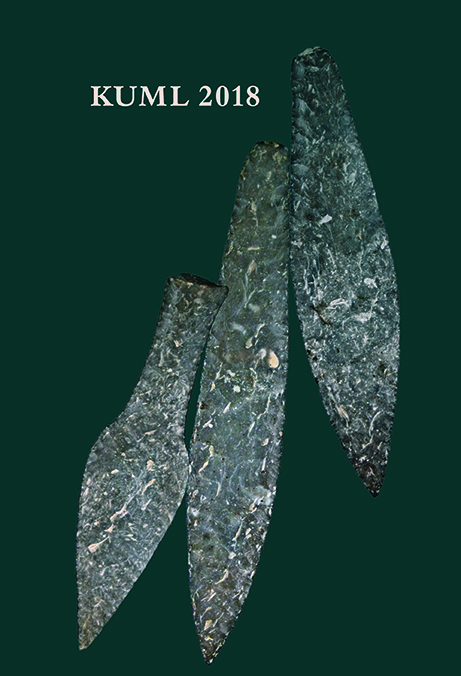Elite residences in Jutland in the 6th-11th centuries AD
DOI:
https://doi.org/10.7146/kuml.v67i67.110842Keywords:
elite residences, elite, residences, jutland, iron ageAbstract
Elite residences in Jutland in the 6th-11th centuries AD
Increasing use of metal detectors during the 1980s and 1990s revealed several new metal-rich sites from the Germanic Iron Age and Viking Age. The major localities of Lejre, Tissø and Toftegaard have led to the assumption that these kinds of sites are only to be found on Zealand. However, in the light of new discoveries at metal-rich sites in Jutland, it now appears necessary to adjust this view.
Since 2014, Viborg Museum has been excavating a rather interesting site in central Jutland, Toftum Næs, which shows some striking similarities with both Tissø and Lejre. There are several great halls, a major pithouse area and several types of metal finds such as jewellery, silver coins and weapons (figs. 1-3). There is also evidence of a remarkable tower, which renders the site unique. Even though the finds are not as numerous, and the halls not as large, Toftum Næs must be seen as a counterpart to the major sites on Zealand.
Much research has been undertaken into central places since the term was introduced by Näsman in the 1980s (1991a; 1991b). Fabech and Ringtved (1995) have attempted to model the characteristics of central places and use the evidence to assign sites to various settlement levels (figs. 4-5). Christensen (2010) lists central functions, together with evidence from place names and archaeological finds that can underpin these (fig. 6.), and Jørgensen (2006) outlines seven site types (fig. 7).
Based on previous work (2014; 2015), I have proposed a model for sites that involves six site types (fig. 8): 1. Aristocratic sites with halls and an unusually high density of buildings and signs of extensive resource consumption in the form of numerous metal finds and traces of cult activities. 1a. Aristocratic sites with halls but no signs of extensive resource consumption and traces of cult activities. 2. Early towns/emporia from the 8th century onwards. 3. Trading and/or landing places (ports of call) with trading activities. 4. Specialised production sites with various kinds of craft activities. 5. Ordinary farms and villages with crop cultivation and animal husbandry as the main occupations. 6. Fortified sites of a defensive (refuge forts) or definite garrison character. I have also listed indicators for the various site types during the Merovingian period and the Viking Age (fig. 9).
The aim of this article is to investigate whether there were aristocratic sites in Jutland like those known in eastern Scandinavia, as the investigation of Toftum Næs appears to indicate. An analysis of some well-known sites, such as Erritsø, Aggersborg and Stavnsager (figs. 10-12), gives reason to suggest that these represented elite residences in Jutland. Many of the elements found at the sites on Zealand, such as halls, pithouse areas, jewellery and traces of workshops and trading activities, can also be observed at sites in Jutland (fig. 13).
In recent decades many new sites have been discovered by metal detectorists. In Viborg Museum’s area alone, we have about 100 of these sites, which are almost only known from metal-detecting activities, although some of them have also been identified on aerial photos or have been subject to minor excavations. If only sites from the period AD 400-1050 yielding more than 50 finds are taken into consideration, this leaves eight examples for further investigation and analysis. The types of finds, dates, place names, topography, aerial photo evidence and results of minor excavations have been summarised (figs. 14-19), and it seems likely that perhaps five of these sites could potentially represent elite residences. The evidence, however, remains sparse, so it is still not possible to draw firm conclusions.
Nevertheless, this study shows that a network of various sites, from landing places to aristocratic residences, was distributed across southern Scandinavia in the Late Iron Age. But there is still much to learn about aristocratic sites in Jutland: Why did some of them have defensive structures, how far apart were they located and so on? The investigation and interpretation of these sites can give us a better understanding of the structure of settlement and society during this period.
Kamilla Fiedler Terkildsen
Viborg Museum
Downloads
Published
How to Cite
Issue
Section
License
Fra og med årgang 2022 er artikler udgivet i Kuml med en licens fra Creative Commons (CC BY-NC-SA 4.0).
Alle tidligere årgange af tidsskriftet er ikke udgivet med en licens fra Creative Commons.


